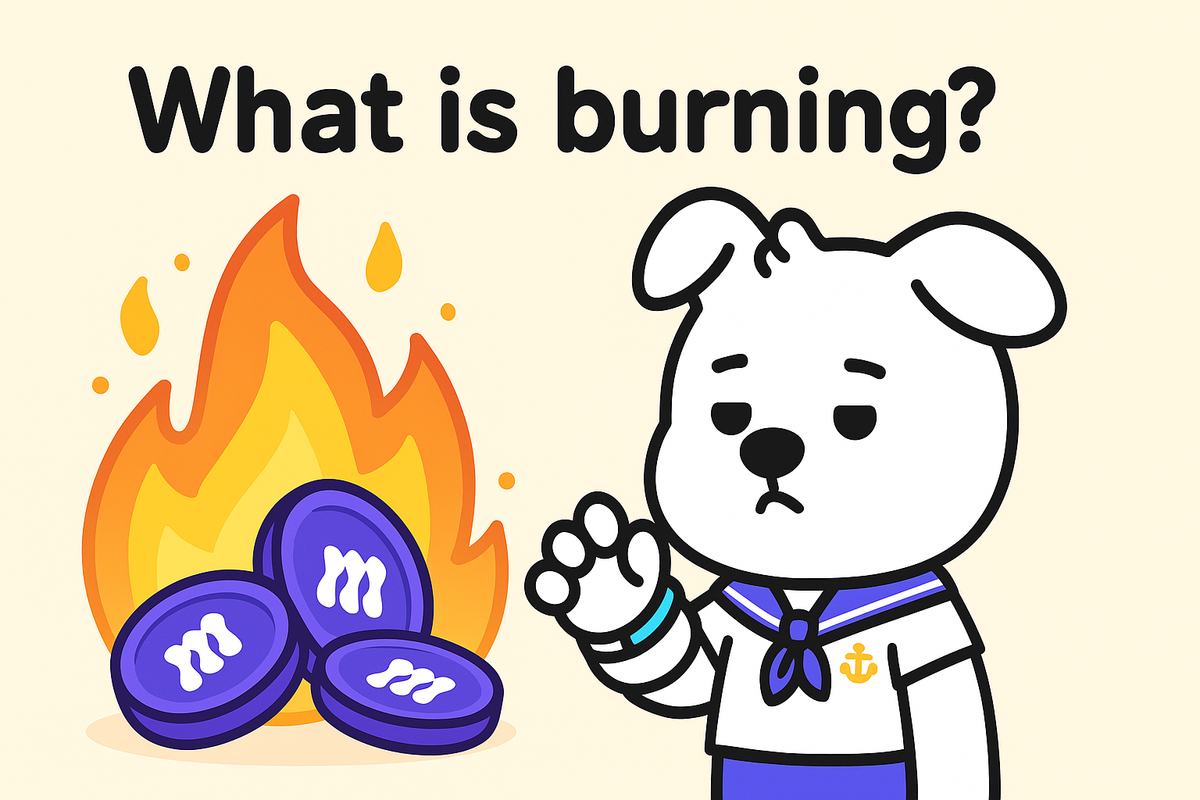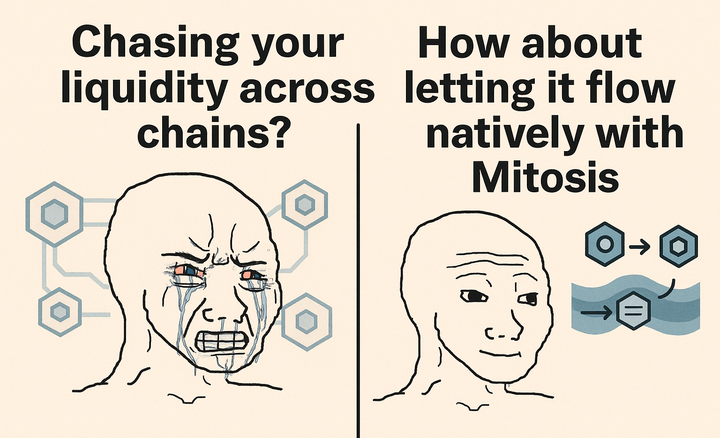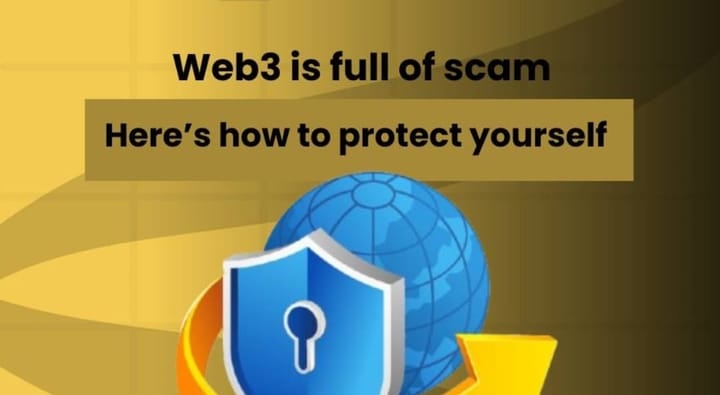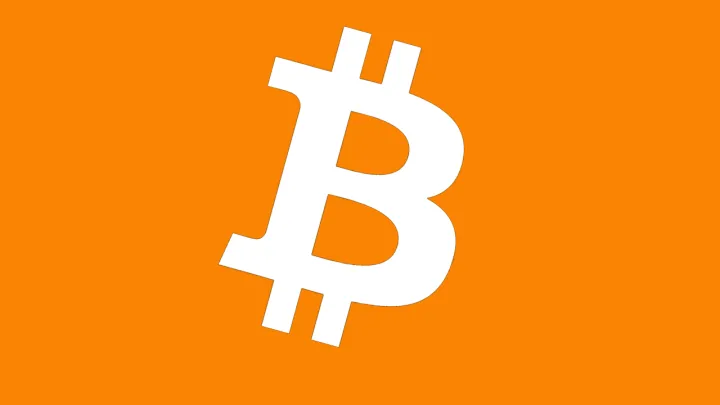Token Burning. Technological Analysis, Economic Impact, and Implementation in Mitosis

Introduction
Token burning is a critical mechanism in the management of cryptocurrency projects, acting as a tool to sculpt tokenomics and bolster community confidence. By permanently removing a portion of the token supply, projects aim to create scarcity, stabilize prices, and signal long-term commitment. Recently, the Mitosis ecosystem approved a progressive token-burning schedule for $MORSE tokens, a clear demonstration of how this mechanism can be strategically employed. As the Mitosis Glossary points out, Mitosis is a "decentralized protocol designed to optimize cross-chain liquidity and liquid restaking by enabling seamless movement of assets across multiple blockchain networks". Voting for this proposal has already concluded on the Snapshot platform, with the community largely in favor: 64% voted "yes," demonstrating a strong alignment with the project's goals. This article delves into the technological intricacies of token burning, explores its advantages and inherent risks, and examines its practical application within the Mitosis ecosystem.
What is Token Burning?
Token burning is the irreversible process of removing digital assets from circulation by sending them to a designated blockchain address that lacks a private key. This "burn address" acts as a "digital black hole", ensuring that the tokens can never be accessed or recovered. The primary objective is to reduce the overall supply, which, in turn, may increase the value of the remaining tokens, assuming stable or growing demand. This approach contrasts with more traditional inflationary models, aiming instead for a deflationary effect.
How Does Token Burning Work?
The functionality of token burning is primarily facilitated through the use of smart contracts, which not only automate but also ensure transparency in the entire process. The typical steps include:
- Initiation: The token owner or the project team initiates the process by invoking the "burn" function within the smart contract.
- Validation: The smart contract meticulously verifies the initiator's balance to ensure the specified number of tokens is valid and available for burning.
- Token Removal: The tokens are effectively removed from the owner's digital wallet and transferred to the designated burn address or, depending on the contract's design, directly eliminated from the total supply.
- Blockchain Update: The overall supply of tokens is updated to reflect the burn, and the entire transaction is immutably recorded on the blockchain, providing an auditable and transparent record.
Due to the nature of blockchain technology, this process is irreversible, solidifying the permanence of the burn and contributing to the token's scarcity.
Why Do Crypto Projects Use Token Burning?
Token burning serves several strategic purposes in the crypto world:
- Inflation Control: By actively reducing the circulating supply, projects can effectively manage and control inflationary pressures on the token, preserving its value over time.
- Value Enhancement: The creation of scarcity through burning can drive up the price of the remaining tokens, especially when demand is consistent or increasing, benefiting token holders.
- Market Stabilization: Token burning can serve as a tool to stabilize market prices during periods of volatility, offering a degree of economic control to project teams.
- Demonstration of Responsibility: Actively managing the token supply through transparent burning communicates the project team’s commitment to long-term project goals, building trust with investors and the community.
Implementation Example - Progressive $MORSE Token Burn in Mitosis
The Mitosis ecosystem recently approved a strategic plan for a progressive token burn of $MORSE, totaling 2,223 tokens, or 22.23% of the total supply, over a 150-day period. This plan leverages a quadratic acceleration model, designed to start slowly and gradually increase the burning rate over time. As Mitosis aims to optimize cross-chain liquidity, this burn strategy is intended to enhance the token's value and utility. As the Mitosis Glossary notes about the functionality of programmability in general: "In decentralized finance (DeFi), programmable liquidity is integral to automated market makers (AMMs), lending protocols, and cross-chain liquidity solutions, enhancing capital efficiency and reducing fragmentation. Projects like Mitosis utilize programmable liquidity to optimize liquidity allocation across multiple chains, ensuring seamless capital efficiency in a modular blockchain ecosystem."
Key Parameters:
- Total Burn Amount: 2,223 tokens ($MORSE).
- Burn Period: 150 days.
- Burn Model: Quadratic progression, with a slow initial pace accelerating over time.

Detailed Burn Schedule:
- Day 30: Approximately 89 tokens burned (4% of the total).
- Day 60: Approximately 356 tokens burned (16%).
- Day 90: Approximately 801 tokens burned (36%).
- Day 120: Approximately 1,423 tokens burned (64%).
- Day 150: The total target of 2,223 tokens burned (100%).
Projected Daily Burn Rates:
- Day 1: 0.1 tokens.
- Day 30: 5.93 tokens.
- Day 60: 11.86 tokens.
- Day 90: 17.78 tokens.
- Day 120: 23.71 tokens.
- Day 150: 29.54 tokens.

The gradual increase in the burn rate is designed to both create scarcity and maintain community interest throughout the duration of the program.

Impact on the Mitosis Ecosystem
The planned, progressive burn of $MORSE tokens is anticipated to yield several key benefits for the Mitosis ecosystem:
- Increased Asset Value: By reducing the token supply, Mitosis aims to increase the inherent value of the remaining $MORSE tokens, assuming steady or increased demand.
- Market Stabilization: The gradual and measured reduction of the token supply is intended to avoid abrupt or destabilizing price fluctuations, fostering a more stable trading environment.
- Investor Confidence: Clearly articulating and implementing a strategic plan for token burning helps to build and reinforce trust among investors, showcasing responsible stewardship of the token economy.
- Support for Long-Term Goals: The token burn is directly aligned with Mitosis’s overarching strategy of creating a sustainable and robust economic model for its ecosystem.
Advantages and Risks of Token Burning
While token burning presents numerous benefits, it's important to acknowledge potential risks:
Advantages:
- Creation of scarcity can lead to increased asset value.
- Market stabilization and increased investor confidence.
- Demonstrated commitment to long-term development and sustainability.
Risks:
- If demand does not increase in tandem with supply reduction, the burn may not have the intended positive effect.
- Flaws in the implementation of smart contracts could lead to technical errors or loss of funds.
- A lack of transparency can erode investor trust and undermine the perceived value of the burn.
Summary
Token burning is a potent tool for managing the economies of cryptocurrency projects. It allows for the strategic control of asset supply, market stabilization, and communication of a long-term commitment. The progressive burn of $MORSE in Mitosis is an excellent case study of how this mechanism can be leveraged to enhance token value and project visibility.
The successful conclusion of the vote on Snapshot, with a decisive majority in favor (64% "yes" versus 36% "no"), illustrates the community’s alignment with the strategic goals of the project and its willingness to embrace innovative economic models.
Technologically, this process relies on sophisticated smart contracts and transparent algorithms, strengthening user trust and confidence in the project’s economic sustainability. With the $MORSE burn, Mitosis aims to enhance asset value, attract new investors, and reinforce its position as a leader in programmable liquidity within the decentralized finance landscape.



Comments ()